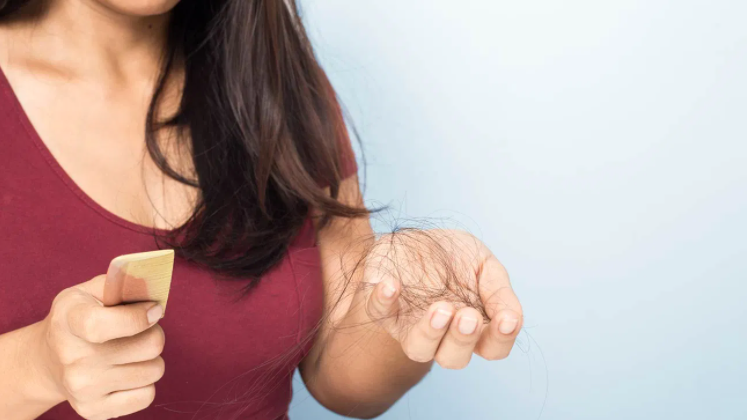Hair loss is widely considered to be a problem that men are facing. But that isn't quite the reality. More than 40% of all women also suffer hair loss at some point in their life.
What causes hair loss among women?
Women can experience hair loss for the same causes as men, but there are some causes that mostly women experience and that are less common amongst men.Having a baby can cause hair loss due to the changes in hormone levels. Like having a baby getting on or off of birth control can cause changes in hormone levels which can result in hair loss. Hair damage is also a cause for hair loss. Things like dyeing, bleaching and using excessive heat on your hair can cause hair to be brittle and being prone to breakage which makes it thinner.
The time most women suffer hair loss is during the menopause. During menopause, you might see one of two things happen with your hair. You might start growing hair where you did not have it before. Or, you might see the hair you have start to thin. One cause may be changing levels of hormones during menopause. Estrogen and progesterone levels fall, meaning that the effects of the androgens, male hormones, are increased. Other factors, such as stress, your diet, and heredity, may contribute to hair loss.
The aging process may mean that some women experience female-pattern hair loss (FPHL). This is also called androgenetic alopecia. This type of hair loss may get worse due to hormone changes.
During and after menopause, hair might become finer (thinner) because hair follicles shrink. Hair grows more slowly and falls out more easily in these cases. FPHL often means that thinning hair is centred at the crown and top of the head.
What are the symptoms or signs of hair loss in women?
- Seeing more hair fall out daily either on your brush, on the floor, in showers, on your pillows, or on the sink
- Seeing noticeable patches of thinner or missing hair, including a part on the top of your head that gets wider
- Having smaller ponytails
- Seeing hair break off


